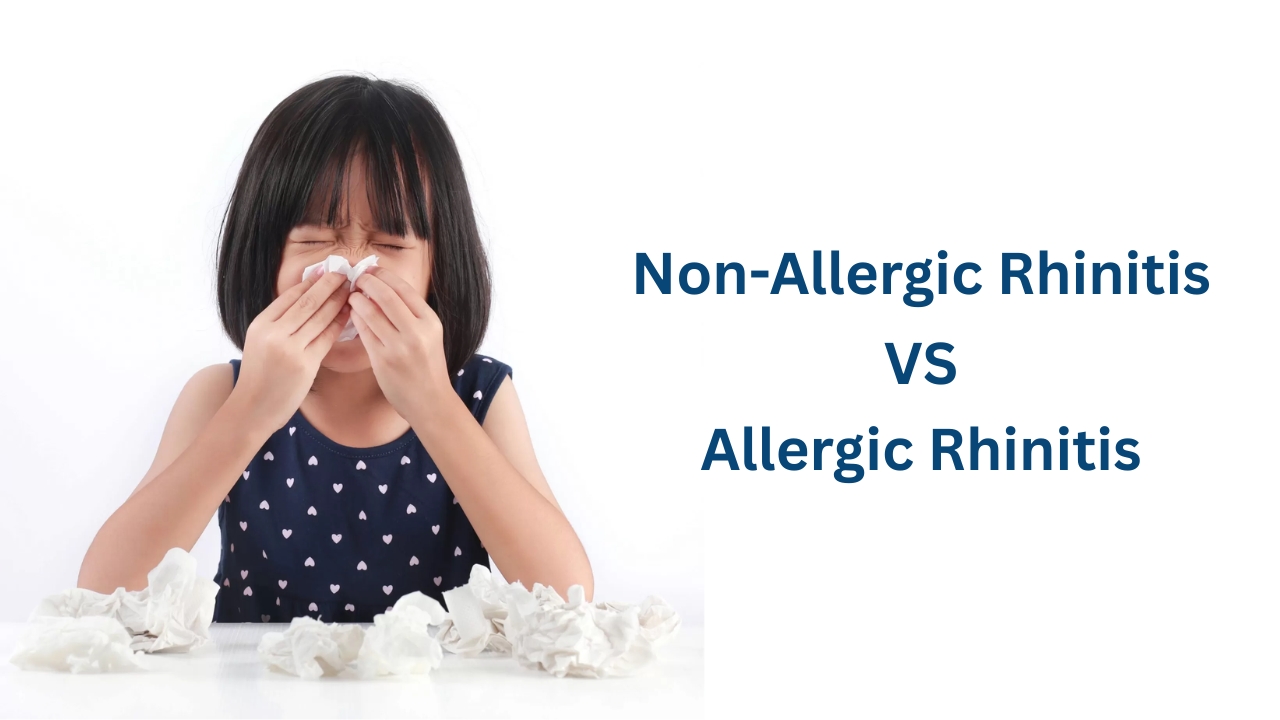If you often find yourself sneezing, dealing with a runny or stuffy nose, or feeling pressure in your sinuses, you might think you have allergies. But not all cases of a “runny nose” are caused by allergies. In fact, many people suffer from rhinitis, which simply means inflammation of the nasal passages, without realizing there are two main types: allergic rhinitis and non-allergic rhinitis. Understanding the difference is important for getting the right treatment and finally feeling better.
Allergic rhinitis is what most people think of when they hear the word “allergies.” It happens when your immune system overreacts to something harmless like pollen, dust mites, mold, or pet dander. This triggers the release of histamine and other chemicals, leading to classic symptoms like sneezing, itchy nose and eyes, watery discharge, and nasal congestion. These symptoms often appear in a pattern — for example, worse in spring and fall if you’re allergic to pollen, or year-round if you’re allergic to dust or pets.
To confirm allergic rhinitis, doctors often recommend skin prick tests or blood tests that measure your body’s reaction to specific allergens. If you have allergic rhinitis, avoiding triggers and using medications like antihistamines, nasal steroid sprays, or even allergy shots (immunotherapy) can be very effective.
On the other hand, non-allergic rhinitis involves similar symptoms — stuffy nose, postnasal drip, and sometimes sneezing — but without the immune system being involved. That means allergy tests will usually come back negative. Instead of allergens, non-allergic rhinitis can be triggered by things like strong smells (perfumes, smoke), weather changes, spicy foods, cold air, or even stress. It can also be linked to underlying health issues like hormonal changes, medications, or infections.
Unlike allergic rhinitis, non-allergic rhinitis doesn’t usually come with itchy eyes or nose, and it often affects adults more than children. Because the symptoms can mimic allergies or sinus infections, it’s easy to misdiagnose. And since avoiding triggers like cold air or air pollution isn’t always possible, treatment focuses on managing symptoms. Nasal saline rinses, steroid nasal sprays, or medications that reduce nasal congestion may help.
Sometimes, people can have mixed rhinitis, meaning they have both allergic and non-allergic triggers. For example, someone might react to pollen and also get symptoms from perfume or cold weather. In these cases, a combination of treatments may be needed to fully control the symptoms.
In summary, both allergic and non-allergic rhinitis can make you feel miserable, but they have different causes and may require different treatment approaches. If you're struggling with ongoing nasal symptoms and not sure why, it’s worth seeing a healthcare provider who can help figure out the cause. Getting the right diagnosis means you're more likely to find the relief you’ve been looking for — and stop letting a runny or stuffy nose interfere with your life.



Add a Comment